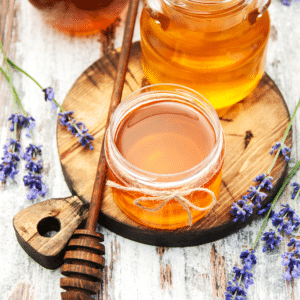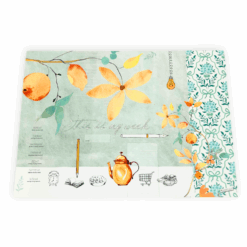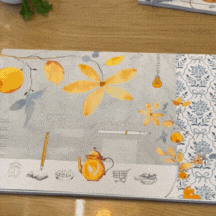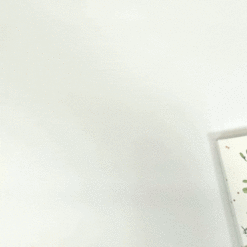Recipes
Herbal honey and tea

Up until around a hundred years ago, minor health problems were often treated using herbs. Lots of the herbs used for healing were the same ones that were used to add flavour to food. Wild plants growing around the house might be used to make a salad or a herbal tea, syrup or tincture.
Sweet and medicinal
If you travel to southern Europe during the summer months, you’ll see all kinds of different herbal honeys for sale. And they’re easy to make at home too. Honey actually has medicinal properties itself: it’s antiseptic, promotes digestion, strengthens the immune system and soothes coughs.
Herbal honey
1. Fill your jar about three quarters of the way to the top with herbs. If you’re using strong aromatic herbs, like lavender, rosemary or thyme, only fill your jar about a quarter of the way up.
2. Pour honey over your herbs until they’re all covered. If your honey is too set to pour, you can heat it slightly in a bain-marie until it’s runny enough.
3. Leave the jar to stand on a sunny windowsill (or in another sunny spot) for at least a week.
4. If you really want your herb-infused honey to be perfect, turn the jar over once a day.
5. After a week or more you can strain out the herbs (by gently warming the honey again), but you can also choose to leave them in the jar.
To support your health
It’s very important for strong herbal tea to be made using only vegetable-like herbs packed with nutrients like vitamins and minerals, or with certain tonic herbs. Think of it as a kind of ‘herb soup’ that you can drink one or two cups of a day to help support your health.
For this kind of herbal tea, it’s best to use dried herbs. If you use fresh herbs, the cell walls will still be intact, so the nutrients will be ‘locked’ inside the hard cell wall. The cell wall is broken down when the herbs are dried or frozen.
Different varieties
The herbs you can use to make strong tea include: milkvetch, stinging nettle, wild pansy, linden flower, red clover, oat straw, burdock root, hibiscus, rosehip, plantain, chickweed, cleavers, raspberry leaf and marigold. For the last two, it’s better not to use more than 10 g per litre because of the tannins, otherwise the tea can start to taste unpleasant.
Strong herbal tea
Leave a large quantity (10 to 30 g) of dried herbs to steep in 1 litre of hot water for a relatively long period (4 hours or even overnight). Then strain the tea.
You can drink this herbal tea or warm it up again. You can keep it in the fridge for up to three days.
If you’ve picked some fresh herbs and want to make a strong tea, it’s important to finely chop or crush the herbs before you put them in the teapot. That begins to break down the cell walls. You’ll notice a difference in the strength though. While a strong tea made from dried stinging nettles will look dark green or almost black, the fresh version will have a pale green colour.
The strength of a tea is determined by the amount of herbs you use and the length of time you steep them for.
*I found all this information in a Dutch book about the power of herbs for the treatment of minor ailments, written by a lady called Anntje Peeters.









